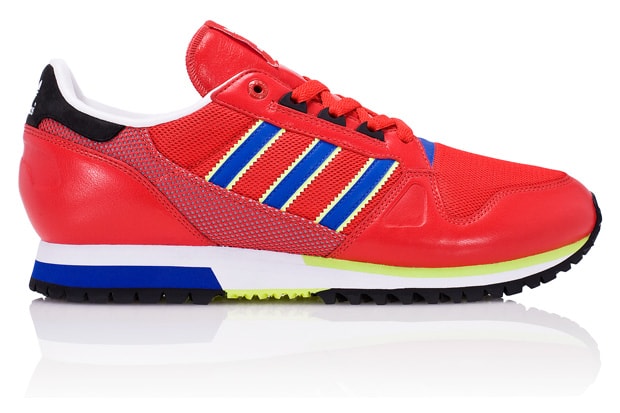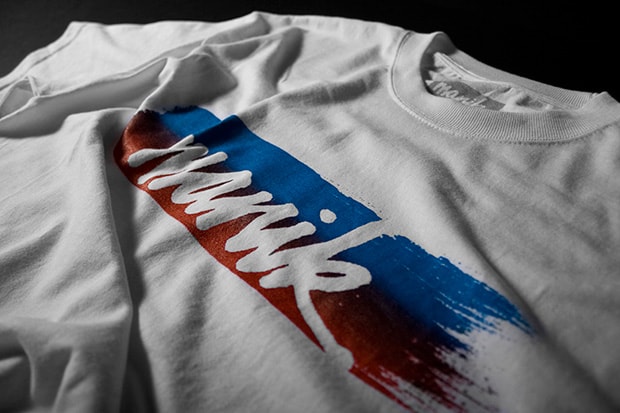Nom de Guerre: Combat Continues
One-fourth of the original founding member’s of Nom de Guerre, Isa Saalabi breaks down the foundation of this premier New York City menswear label with a look into its upcoming 2010 Spring/Summer Collection.
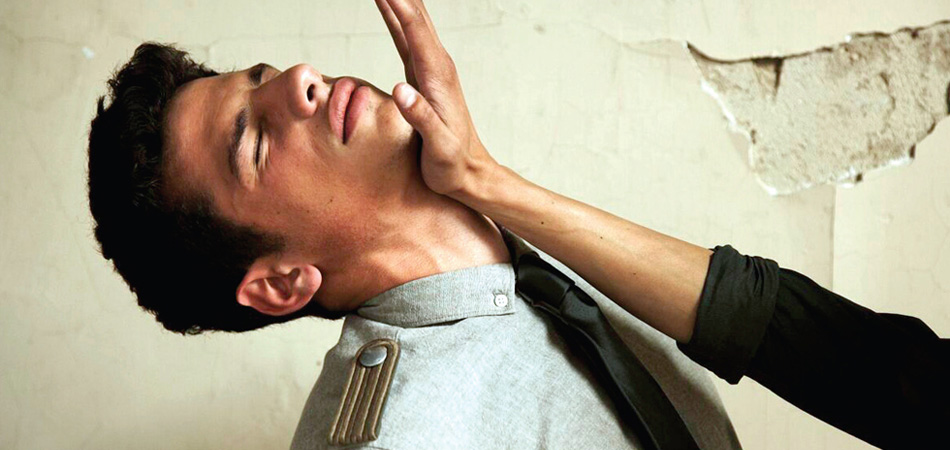
From the onset, Nom de Guerre took an atypical approach to their brand. With humble beginnings in graphics, initial runs of t-shirts have inevitably developed into a respected and diverse collection. Representing a model for organic, sustained growth and success, each season has embodied offbeat themes. With deep underlying themes and motives, the opportunity to speak face-to-face with Isa Saalabi, at a chance meeting in Tokyo, gave me a better understanding of the complexity of the brand. As one-fourth of the original founding member’s of Nom de Guerre, Isa presented an insightful look into how the brand has come along and developed. The well-rounded group, which includes Holly Harnsongkram, Wil Whitney, Devon Ojas and Isa himself, provides the appropriate feedback into the whole equation, which has arguably been a very successful philosophy. With their 2010 Spring/Summer Collection unveiled here, we hope to delve deep into the conceptual aspect of one of contemporary fashion’s most intriguing brands.
Interview: Eugene Kan
Photography: Dan Martensen
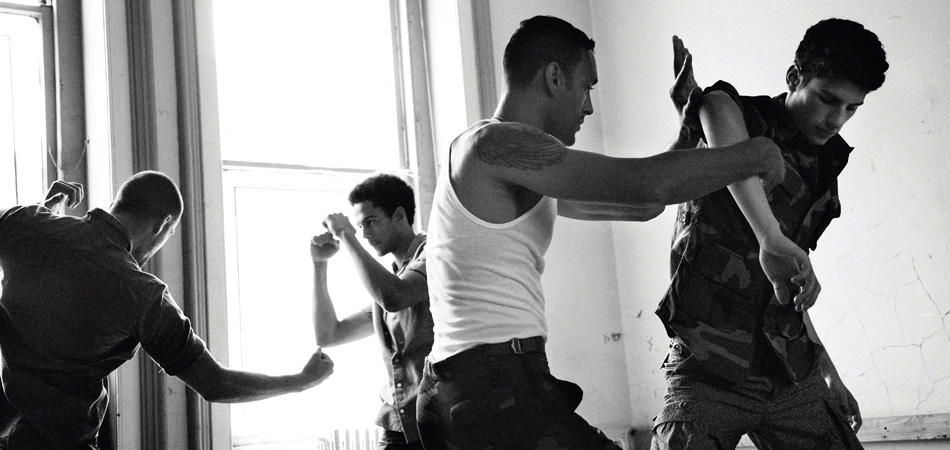
Interview with Isa Saalabi of Nom de Guerre
Coming from a diverse background, yourself as well as the other Nom de Guerre founders each maintain some specialized roles. How does this work to the strengths of Nom de Guerre and how did you all originally come together?
We met while living and working in downtown New York; and came together synchronously as we were drawn to one another’s perspective and body of work. From the inception of the brand, we decided to use the opportunity and our varied backgrounds to test the theories of collective consciousness and collective reasoning. With this purpose, we combined our abilities, allowing our participation to take shape organically and move towards a singular vision.
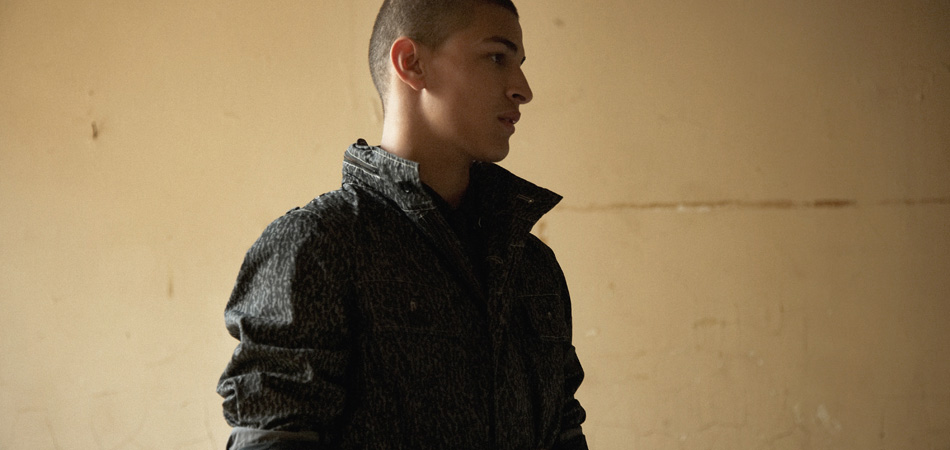
Upon your launch, would you say that calling Nom de Guerre simply a “fashion brand” is a bit overly general in that it brings to the table much more than apparel and garments? What were some of your best moments and projects within your first few seasons?
It was our foremost intention to create an organization that would allow us to combine our various interests and use this exploration to form a byproduct. The garments are therefore, the articulation of these inspirations and beliefs, within the parameters of utilitarian design.
Our first project was to establish an identity that would engender the outgrowth of the ideas and theories that we wanted to test, so we chose Nom de Guerre. Historically a “nom de guerre” had two functions, first, to identify the group thereby giving the members solidarity; and additionally, safeguarding the personal identity of each member during operations. These ideas of fraternity and sublimating one’s identity to operate within a group are the foundation and reference point of each collection. After this, we established the store underground, a move that was in opposition to current philosophy, but it seemed like a better way to communicate the ideas that were important to us; it was also more aesthetically and sociologically interesting.
With the clothing line, our initial projects included the logo executed as tree lettering, ribbon script, and a rendering of the name in Arabic. We used t-shirts and fleece as a foundation for the clothing brand and proceeded to build the brand from this base. At this time, we also created a book section that provided customers with literature, such as, leftist revolutionary manuals, architecture books, and a collection of contemporary photography monographs that test the boundaries between art and pornography. Our commencement events included a Steven Klein photo exhibit, followed by the book launch of the Disruptive Pattern Material Camouflage Encyclopedia. These early projects set the groundwork for our evolution and the continued exploration of the brand.
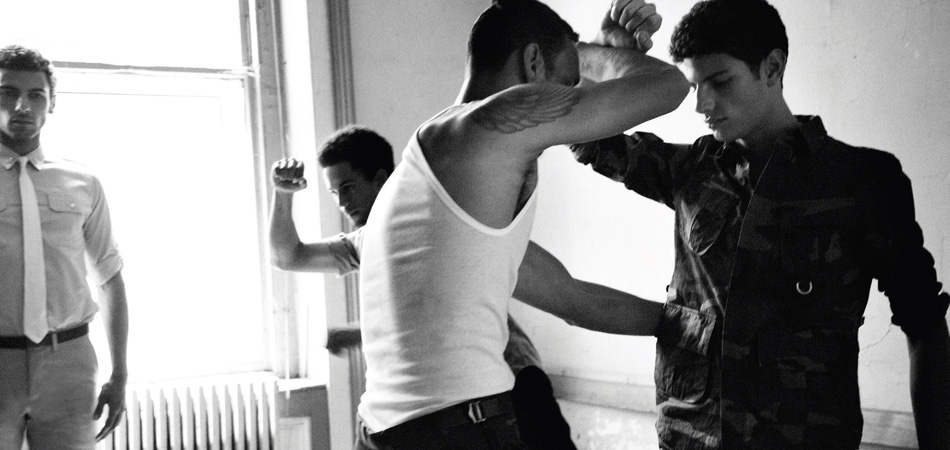
Do the same things that inspired the collective upon Nom de Guerre’s launch still hold true or do you feel as though the brand’s overall direction and subsequent strength is based off its ability to find interesting elements over so many facets of life and culture? How has the Nom de Guerre aesthetic changed over the years?
When we launched the brand, we had a very clear, yet intuitively based idea of the overall direction that we wanted Nom de Guerre to take. Seeing the tangible results over the seasons has enabled us to more clearly define each subsequent collection as well as incorporate variations on our overall theme.
Our formative interests remain at the core of the brand, and our research methods are such, that we are still exploring branches of our original subject matter. At the same time, we do believe that it is a particular strength of the brand that we are each able to investigate what inspires us and pursue our particular strengths. This allows us to then synthesize these seemingly disparate elements into one product.
From our point of view, the Nom de Guerre aesthetic has evolved into a sharper focus, and we are very excited about the increasing design possibilities of the line as we become more adept at utilizing our resources and continue to explore the various ideas that come up each season.
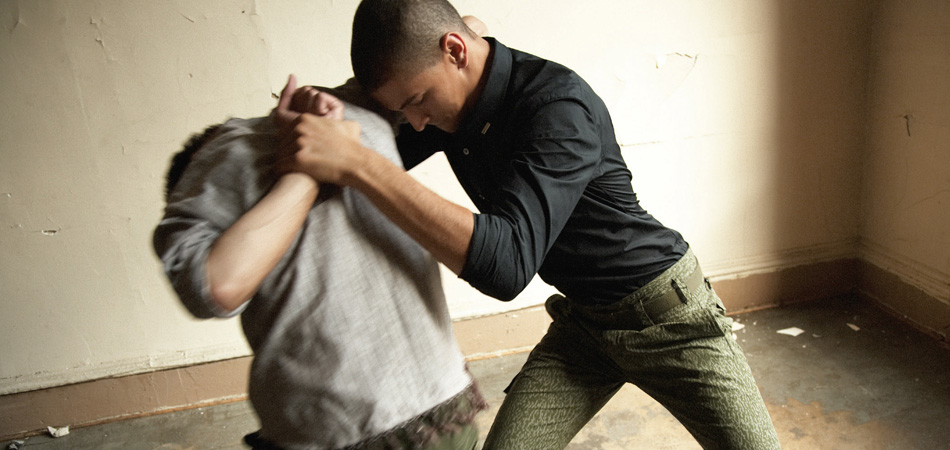
How long in advance are you conceptualizing collection themes or do you have a strong library of ideas that you are waiting to execute when the timing is right?
We are usually working on several things at once, so it is hard to say at what point we start conceptualizing the next collection. Our creative process is closer to the mechanics of a Piston Engine or Chaos Theory Mathematics. Then, we are researchers and have multidisciplinary curiosity, so we will see how much information we can find on a subject and then extract what we like. We also often mix ideas, so each collection is more of an amalgamation of our interests and contains several different sub-themes.
Arguably many would say that New York is the birth place of so many mainstream and sub-cultural movements. To yourself and Nom de Guerre as a group, what is it about New York that really permeates the landscape over so many different cultural levels. What do you consider the pros and cons of the city?
The frenetic energy and rapid influx of cultures and ideas in the city is the catalyst for such an interesting bonding of people into these subcultures and movements that make New York so interesting. We are still engaged in the research of identifying markings within subcultures. What fascinates us is the idea that these markings, either objects or clothing details, can become deeply imbued with the social context of the ideas of the group. These signifiers can become embedded so strongly into public social consciousness that when separated and even abstracted, these markings still carry a strong meaning. New York is the perfect place for observing the full chain of this social structure.
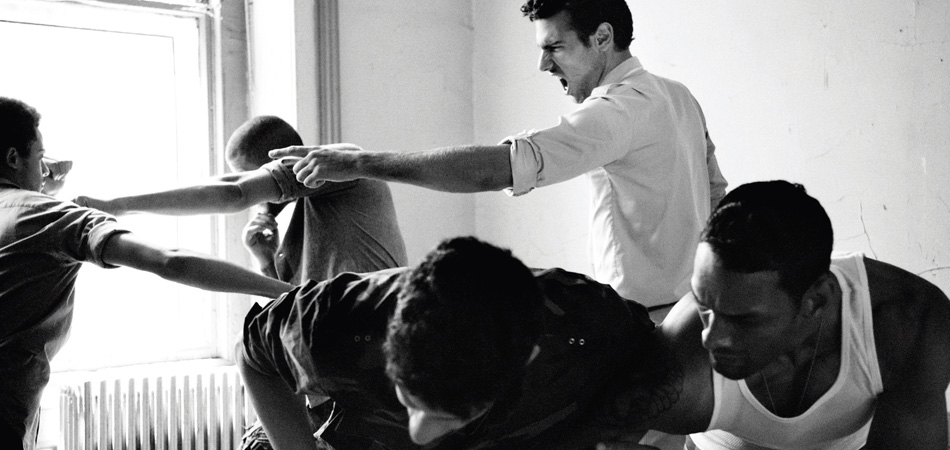
So if I understand this correctly, you feel as though there are subtle cues within subcultural contexts that ultimately hold a strong meaning? And it’s these cues or markings that you are consistently looking to discover? How does this application carry-over into the realm of fashion and Nom de Guerre’s design from these subcultures? I find it quite interesting in trying to link the two when I feel that they are arguably two different and non-connective arenas.
Our interest lies in these subtle cues, as well as the question of why these subcultures choose certain markings to represent their image. However, our definition of a subculture is relatively broad, and includes all groups that form due to a need for solidarity and use clothing as a group identifier. Out of these groups, we look at the ones that appeal to us and extract elements from them.
For instance, in the Spring/Summer 2010 Collection, we looked at the militant groups in Algeria during the Algerian war, as well as other relevant social groups. The resultant pieces that we came up with by distilling elements from these groups are interspersed with other cultural information and the end result is a collection of pieces that read like journalistic impressions.
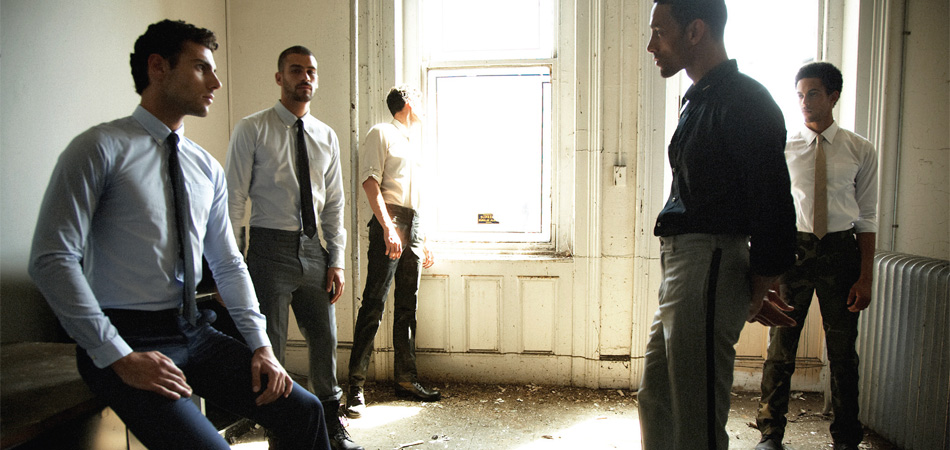
Do you find a lot of your inspirations reside in the past more so than the contemporary? Sometimes I feel that present-day culture requires a bit of a “marination” period of sorts to see how it affects society as a whole. What sort of aesthetics does the collection embody based on the theme of the Algerian War?
We look to history and culture of certain periods and then reappropriate aspects that we strongly identify with, putting them into what we perceive as being a contemporary structure, and thereby making a comparison. The collection borrows from the style of the era, as well as the artistic thoughts that were breaking ground at the time. At the same time there is the juxtaposition of military and civilian that we thought was important to make because it strongly reflected the situation.
For the lookbook, what was the setting and mood you were looking to convey? Is there a particular reason that the shots switch between color and black & white?
We generally use both black & white and color in the books, but in this instance we selectively chose which ones would be in black & white and which in color as a way of punctuating the ideas between documentary and actuality, and additionally as an allusion to defense manuals.
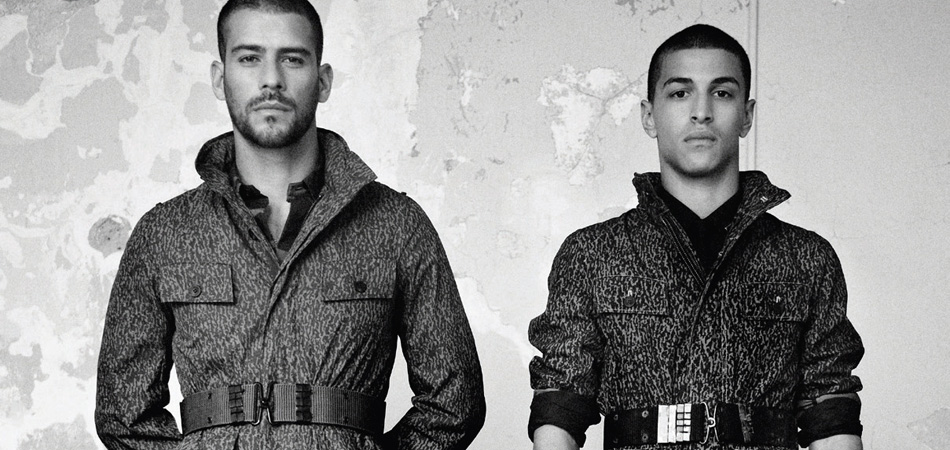
When taking on a theme of that surrounds war and its accompanying aesthetic, are you careful not to simply re-create what has already been done? How do you look to distinguish a piece of uniform into something fit for the realm of fashion?
For us, using Nom de Guerre and its related historic subtext, serves more as a design parameter so that we will remain conscious of the design issues that are a part of our manifesto; this is our primary focus so that we keep a balance between function, reality, and what inspires us each season. In all of the pieces, we want to create something that looks as if it has always existed, yet is at the same time, stark and modern. For us, the uniform is the embodiment of this idea and serves as our starting point. For instance, when one looks at a uniform, even though it was created during a specific time, like the Korean War, one doesn’t look at a typical field jacket and think that it looks very 50s. Therefore, we try to work in the same manner, and are very careful about the design choices that we make. We hope that the end result is a piece that can exist as timeless styles, yet addresses current fashion and ideas as well.
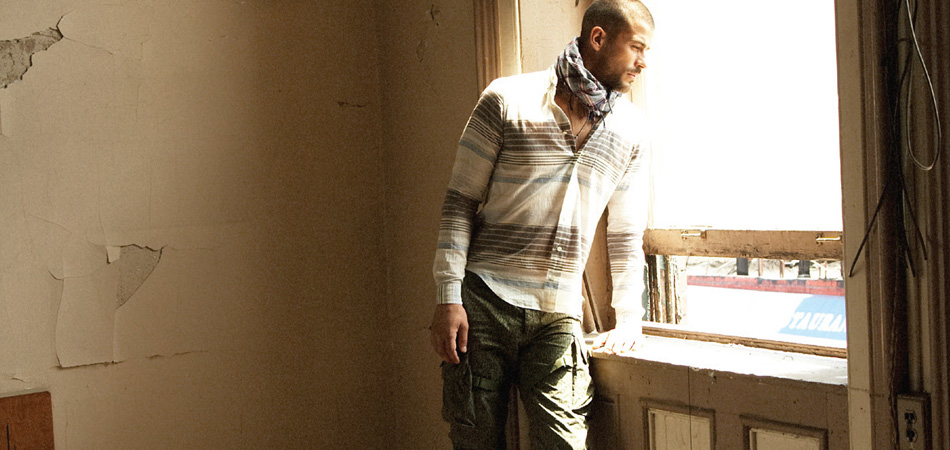
It seems as though there’s a fine-line between translating something conceptually into something tangible and practical. Arguably, we have genres of designers for that reason, but I think Nom de Guerre does strike a fine balance in the brand’s execution. Moving forward, we caught wind that Nom de Guerre has undergone some significant restructuring on the distribution level, resulting in lower price points all while maintaining your penchant for uncompromising quality. How important is this for the brand going forward? As a brand, does creating a more affordable product relative to its previous seasons sometimes change the brand’s image?
We have always worked on Nom de Guerre each season based on an ideal that we have in mind. Our philosophy has been to consistently follow our own instincts and interests in creating the storyline each season and execute these things within certain set parameters. In addition to the overall direction, our vision of the brand has always included the construction and tailoring that we provide, using high-quality fabrics and an ideal price point. For us, the idea of sacrificing the quality of the garments has never been an option, which leaves us with the challenge of how to continue to produce exceptional quality while offering an affordable price-point all while being an independent start-up. In order to attain this balance, we have altered our distribution model, and effective spring/summer 2010, we will be utilizing our New York City retail store as a test ground to reduce our retail price point for our client by an estimated 30-40% of what it has been in the previous seasons. By limiting our North American distribution to our own store and a handful of loyal accounts, and implementing a “cost to retail” strategy, we can realize our goal for the brand’s price point and additionally maintain a limited and specialized distribution.
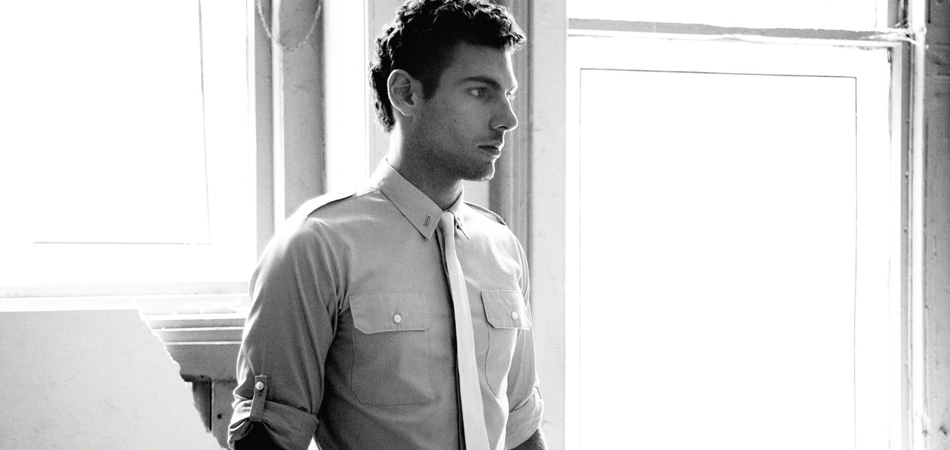
Do you feel that you may encounter any potential difficulties going from a relatively higher price point to a lower price point? I’m sure many of your loyal fans will applaud your efforts because it makes things more easily accessible on an economic level. However, from a branding perspective and putting to market more affordable priced garments, does it have any effect?
As an independent label, we are able to refine the brand with a flexibility that is not afforded larger companies, so we continue to take advantage of this and shape the line to our ideal. Moreover, it is definitely our incredibly strong and loyal customer base that allows us the freedom to make this change. From our standpoint, the defining aspects of a brand, are the quality of construction and materials used, as well as the overall viewpoint of the line. And this is the foundation of the label that we are continually committed to.
Seeing as you’re now able to bring to market more directly, does this offer you the chance to step things up. Perhaps creating garments that are even more ground-breaking or innovative in quality that hit your previous price points?
Definitely. The shift that we are making took a lot of work to set up. However, the idea that we could enhance the quality of the collection and free ourselves to further explore the design possibilities of the line was our impetus.
Thanks a lot for the opportunity Isa, any last words? When will the 2010 Spring/Summer collection be available?
Thank you HYPEBEAST. The Spring/Summer 2010 collection will be available at Nom de Guerre New York and selected stores internationally by February 15th.





